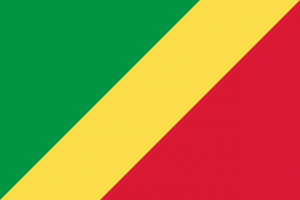Language/Lingala/Culture/Traditional-Music-and-Dance
| ◀️ Festivals and Celebrations — Previous Lesson | Next Lesson — Traditional Foods ▶️ |
Traditional music and dance are an integral part of Lingala culture. They reflect the history, heritage, and social practices of the people. In this lesson, you will learn about the various traditional Lingala music and dance styles, their cultural significance and how they have evolved over time.
Consider exploring these related pages after completing this lesson: Festivals and Celebrations & Arts and Crafts.
Lingala Music Styles
Lingala music is a fusion of different African rhythms, such as rumba, soukous, and zouk, with Latin American influences. Lingala musicians use a variety of instruments, such as drums, guitars, and trumpets, to create unique sounds that are popular in Central Africa.
Here are some popular Lingala music styles:
Soukous
Soukous is a popular genre of dance music that originated in Congo in the late 1930s. The music is characterized by its fast-paced rhythm, energetic singing, and lively dance moves. The word “soukous” comes from the French word “secouer,” which means “to shake.” The music is intended to make people dance and shake their bodies.
Rumba
Rumba is another popular Lingala music genre that originated in Central Africa in the 1940s. The music is characterized by its smooth and melodious rhythm, romantic lyrics, and graceful dance steps. The music is usually played at social gatherings and parties, and it is a popular choice for couples’ dances.
Zouk
Zouk is a Lingala-style music genre that originated in the French West Indies in the 1980s. The music has a slower tempo than soukous and rumba, and it is characterized by its jazzy chords and sweet melodies. Zouk has become very popular in Lingala-speaking countries, and many Lingala artists have incorporated the genre into their music.
Lingala Dance Styles
Lingala dance styles are diverse and reflect the culture and traditions of the people. They are an essential part of social life and are performed at weddings, funerals, and other celebrations. The dance styles vary according to the region and the occasion.
Here are some popular Lingala dance styles:
Kisanji
Kisanji is a fast and energetic dance style that originated in the Kasai region of the Democratic Republic of Congo. The dance involves jumping, kicking, and spinning, and it is often performed by men wearing colorful “Kasai-style” clothing. The dance is usually accompanied by drums and other percussion instruments.
Ndombolo
Ndombolo is a popular Lingala dance style that originated in the 1990s. The dance involves a lot of waist movements and hip gyrations, and it is performed to fast-paced Lingala music. The dance became popular throughout Central Africa and was even criticized by some for its provocative style.
Soukous / Kwassa Kwassa
Soukous / Kwassa Kwassa dance style is a popular dance that originated in Congo. It is characterized by the motion of the hips, feet, and arms as the dancer moves to the rhythm of the music. A key feature of the dance is the movement of the pelvis, which is meant to simulate the movement of the Congolese river Kwassa Kwassa. The dance style became popular in the 1980s and has since spread throughout Central Africa.
Cultural Significance
Lingala music and dance play an essential role in the social, cultural, and historical fabric of the Lingala-speaking people. They are used to celebrate important events, such as weddings and funerals, and they are used to express social and political issues in a creative and artistic way.
Music and dance are also used to express emotions, such as happiness, sadness, love, and joy. They are an integral part of the identity of the people and a means of preserving their cultural heritage.
Evolution of Lingala Music and Dance
Lingala music and dance have evolved over time, reflecting changes in society, politics, and technology. In the early years, Lingala music and dance were performed in small groups and were usually accompanied by instruments made from local materials.
With the advent of modern technology, Lingala music and dance became more accessible to a wider audience. The introduction of electronic instruments, such as synthesizers and drum machines, led to the development of new Lingala music styles, such as soukous and ndombolo.
In recent years, Lingala music and dance have become more globalized, with Lingala musicians performing in different parts of the world and collaborating with international musicians. This globalization has led to new hybrid music styles and the incorporation of non-Lingala elements into Lingala music and dance.
Conclusion
Traditional Lingala music and dance are an essential part of Lingala culture. They reflect the history, heritage, and social practices of the people, and they are used to celebrate important events and express emotions. As Lingala music and dance continue to evolve, they remain an integral part of the cultural identity of the Lingala-speaking people.
Having concluded this lesson, consider checking out these related pages: New gifts & Traditional Foods.
Other Lessons
Sources
| ◀️ Festivals and Celebrations — Previous Lesson | Next Lesson — Traditional Foods ▶️ |

